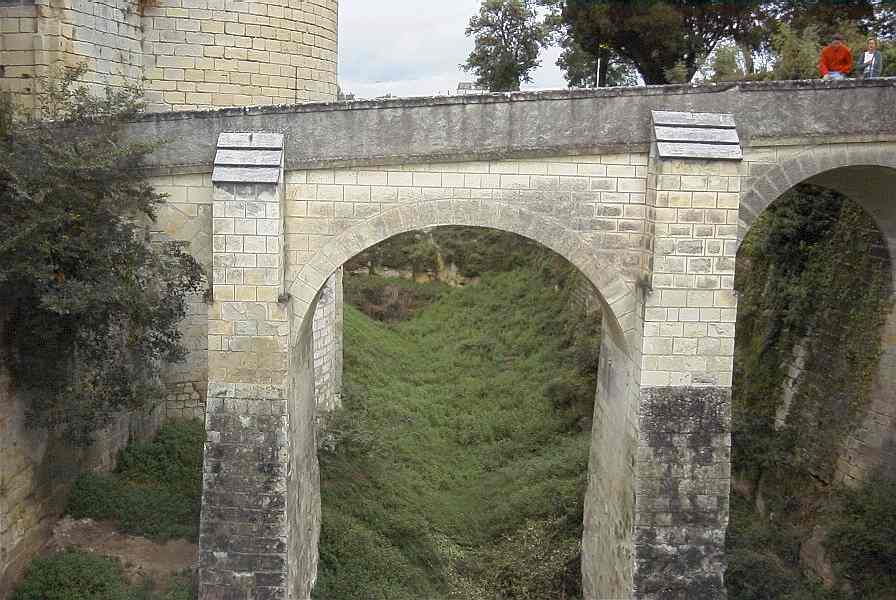
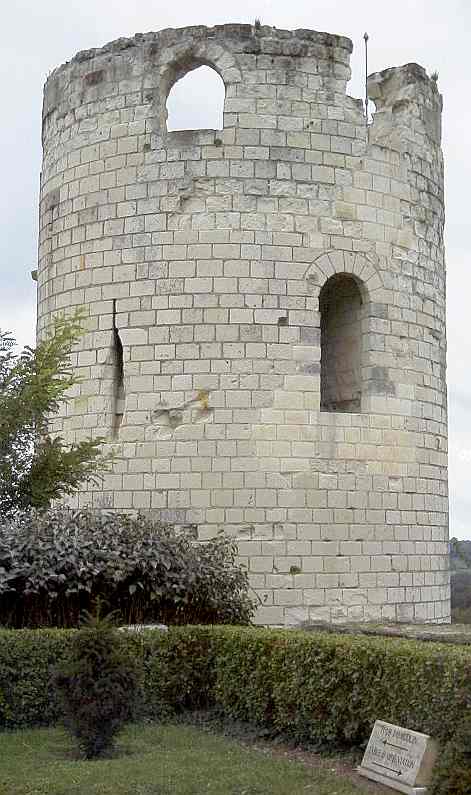 Called the Mill Tower because it
was built where many windmills had once been, this was Chinon
Castle's original keep.
Called the Mill Tower because it
was built where many windmills had once been, this was Chinon
Castle's original keep.
Next we stopped at Chinon which was much more of a ruins than a set of buildings (not unlike the Forum of Rome). As we recall, only one building put a true roof over our heads. Chinon was a remnant of the fortress days of chateaux. In fact, it was three separate forts separated by moats (which in Chinon's case were always dry). Here's a picture of one of Chinon's 13th century moats with the walkway over it: One of these even had a hidden walkway used by King Charles VII to visit his mistress. Obviously their relationship wasn't quite above ground yet.

While were waiting for the pictures to load, let's talk a little about castle structures:
Many places like Chinon had been places of defense for a long time, often (like Chinon) back to the Roman days. (Chinon, in fact, has remnants of Roman triumphal arches, tombstones, etc.) These typically would have their fortifications increased during the ninth century because of some rambunctious early tourists called Vikings who would sail up the Loire and not always pay for what they used, there being no Mastercard. (Being a former Detroit Lions fan, I know the feeling of being abused by Vikings.)
Often these hastily constructed defenses (little more than mounds of earth and wooden structures) would have a central tower as an observation post. Until the tenth century, only the king could build castles. However, "ordinary" nobles could have these observation towers which evolved (because of this loophole) from square wooden structures into high, well-built round masonry edifices called keeps. Keeps (of which Chinon has at least one of significant historical interest) became the strongest point of the castle even as walls and other fortifications were added. In case the outer walls were penetrated, the keep could serve as a last defense.
Chinon became the castle we no longer see under Henri II Plantagenet who stayed there often with Eleanor of Aquitaine, his queen. He died here and because of it was close to the Abbey of Fontevraud, Henri was buried there. Tradition says his prodigal son Richard the Lion Hearted also died here. Not much is left of their buildings. Here's a typical view of the living area of the castle showing not much left but a fireplace and a wall.
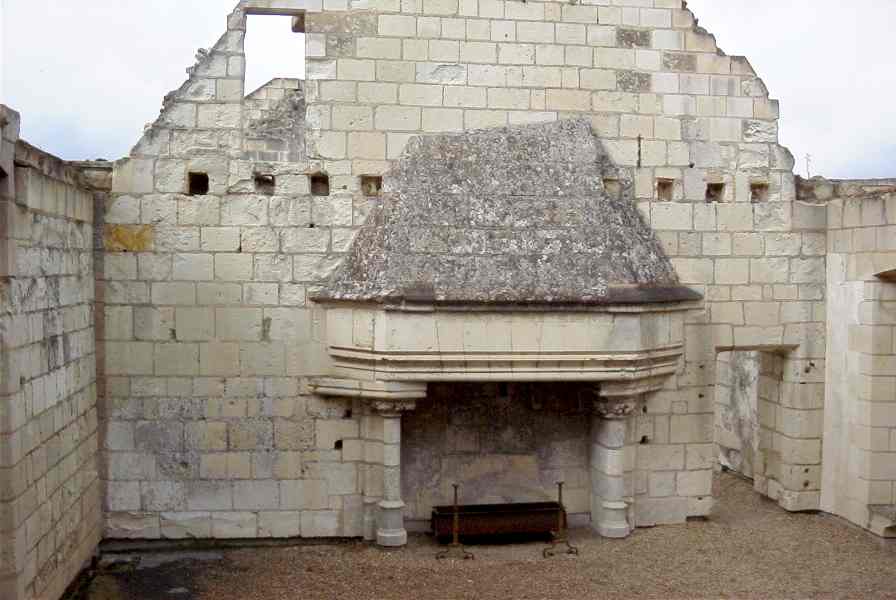
But there were two other sets of famous tenants we should discuss who lived in the Coudray Keep shown below. The first were the leaders of the Knights Templar, a mystic society founded during the Crusades, which answered to just about noone (technically just the Pope) and paid no taxes (and so got the kings pretty incensed). Early in the 1300s, Philip the Fair had every member of the order in France arrested on the same day. He imprisoned the Grand Master and 140 knights in Chinon castle. The Coudray Keep shows graffiti carved by them during their stay. (The Knights ended up being burned alive in Paris near the present Notre Dame Cathedral).
The other famous tenant (this one voluntary) was, of course, Joan of Arc. Pietrina agreed to pose in front of the statue so you could get the picture of just how it must have looked in Joanie's day:
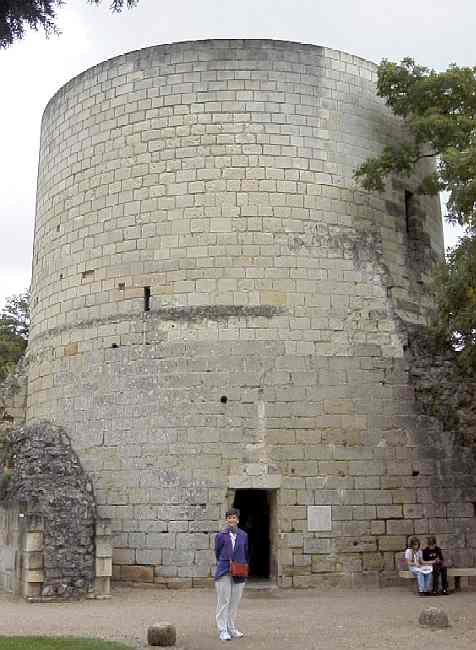
It was at Chinon in the 15th century that Joan met the Dauphin (later Charles VII) and convinced him to reconquer his kingdom. Here's the top story of the tower where she lived. It was used later to house pigeons which might explain its curious walls below:
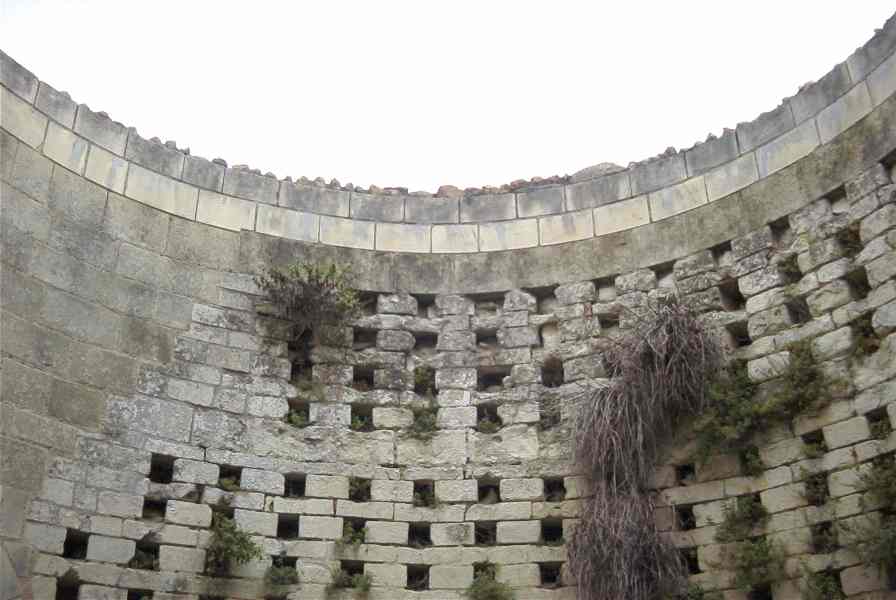
And you thought your teenager's room was a mess!
However, the castle does have one building mostly intact, the clock tower, which has not only a roof but 7 rooms (on 3 stories) dedicated to a museum to Joan of Arc complete with a multilingual tape recording. (Reminds me of some of the people I currently work with in Paris)
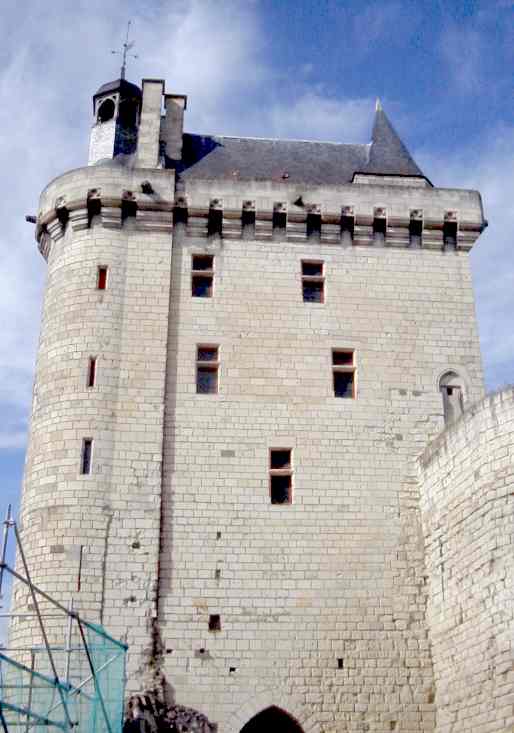
As castles evolved, their enclosed areas typically became more compact than what would be found in an early fortification like Chinon which sprawls about a 5th of a mile long (but only about 250 feet wide).
The prime reason that a historically significant place like Chinon was allowed to deteriorate was the Cardinal de Richelieu bought it in the 17th century and allowed it to be dismantled little by little so that his hometown (Richelieu) nearby could become the dominant village in the area. (Ordinarily we're fans of Richelieu as he was the prime driver for two major buildings just a block from our apartment: the Palais Royale and the Bibliothèque Nationale.)
Being a fort, Chinon was built high on a hill to make it easier to defend (and see the enemy approaching). Here's a couple views of the town which grew up between the fort and the river Vienne which flows northerly into the Loire:
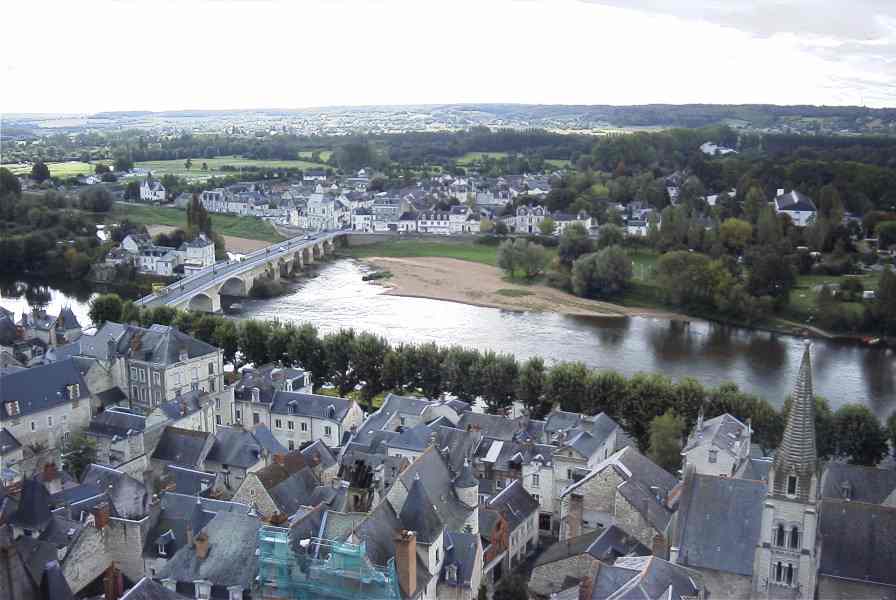
Had enough? Here's another village view including the Vienne:
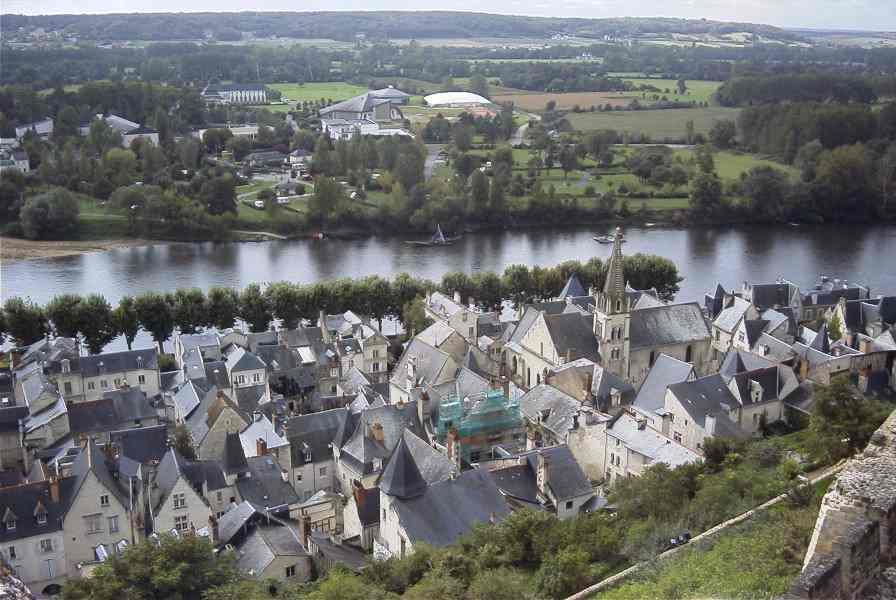
Chinon is dead center to a great wine producing region. The picture below was taken from the castle's ramparts across the wall to a vineyard:
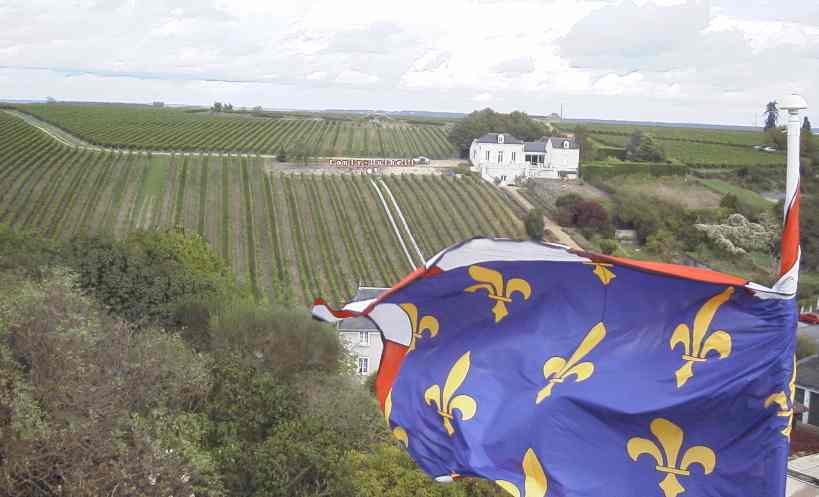
Next we made a quick stop (promise) to Azay le Rideau. Join us by clicking here:
Where do you want to go today? Here's a few choices:
